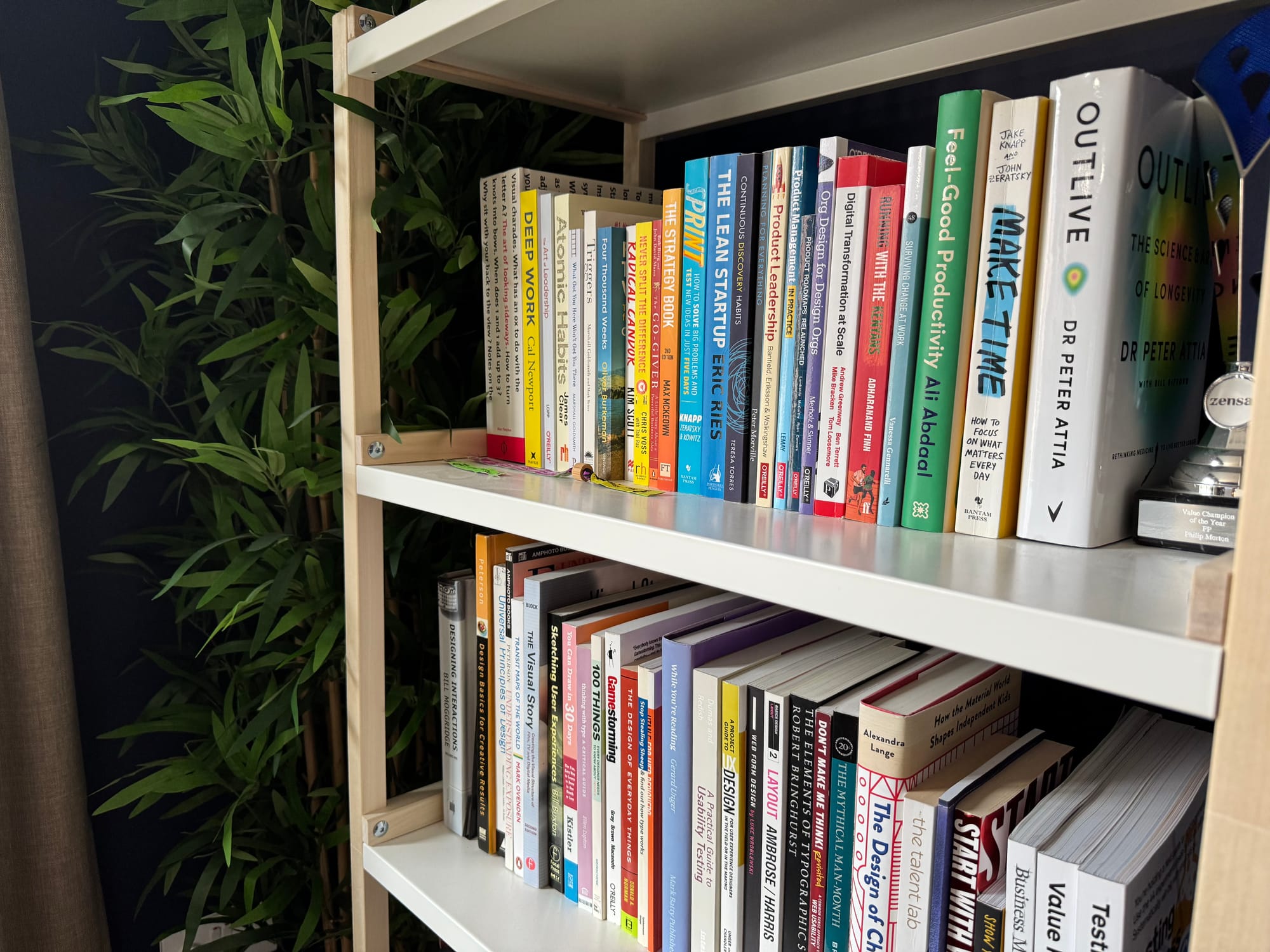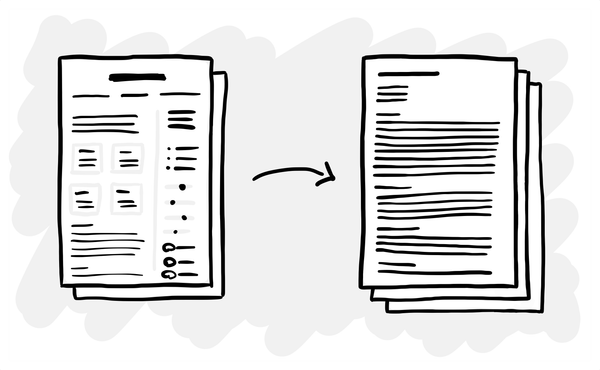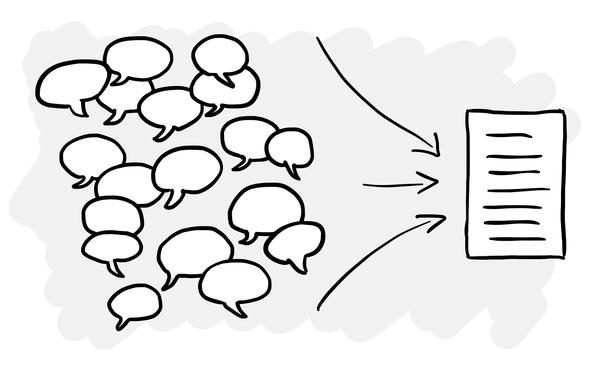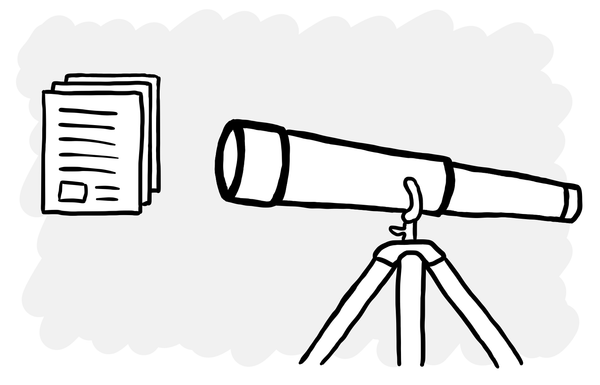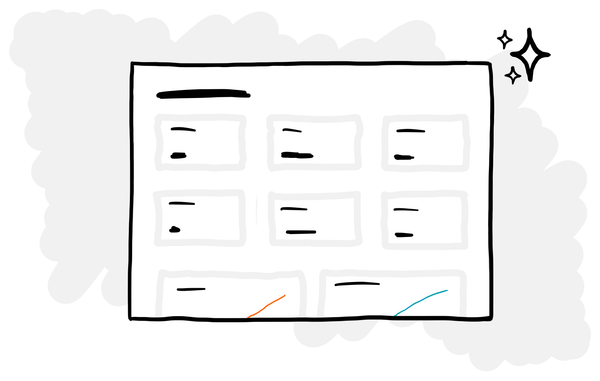Why researchers love writing reports
We all want to create things that feel 'heavy'.
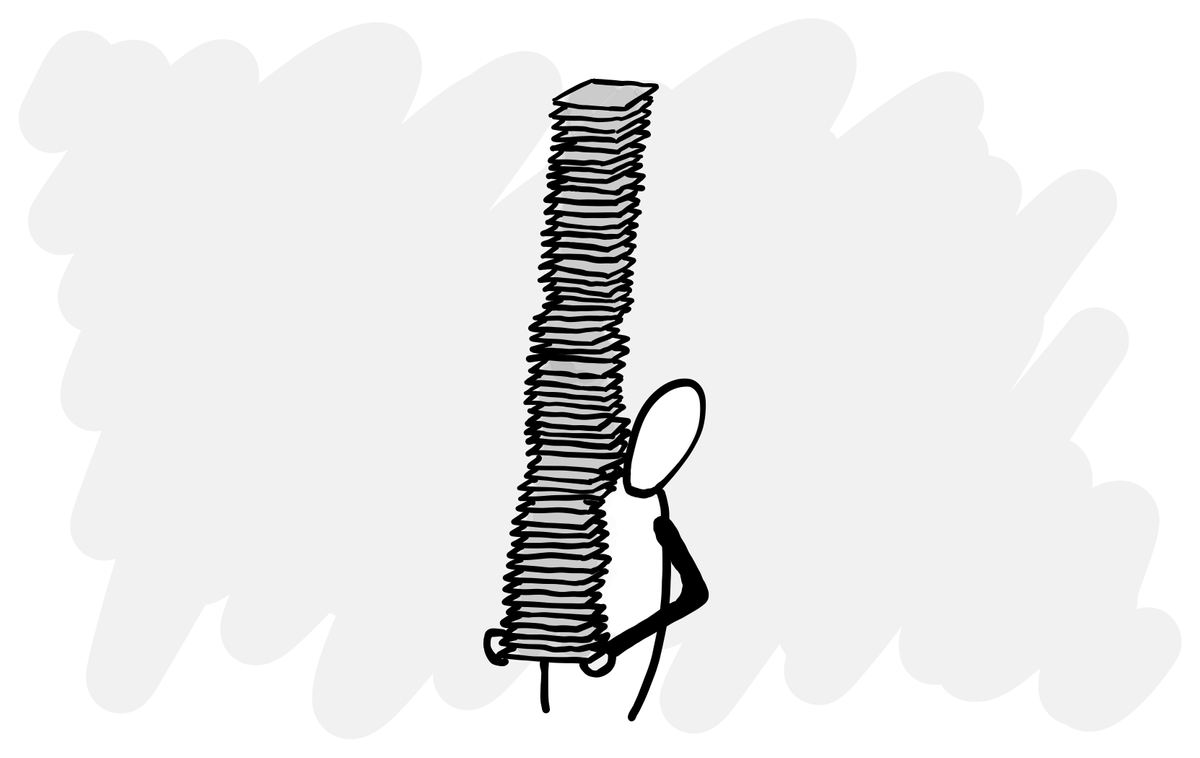
If you ask me to show you the work I’m proudest of, there’s a good chance I’d show you a research report.
Not all researchers love writing reports, but many do. Yet this is at odds with where the industry is going: faster product cycles, less formal documentation, outcomes over outputs.
Speak to stakeholders and they often get frustrated with this - why do they keep making 80-page reports?
So why do researchers love writing reports and what are the alternatives?
Make something heavy
In her brilliant essay Make Something Heavy, Anu Atluru outlines how the modern world pushes creators to make ‘light’ things: Reels, TikToks, tweets, memes, etc.:
The modern makers’ machine does not want you to create heavy things. It runs on the internet—powered by social media, fueled by mass appeal, and addicted to speed. It thrives on spikes, scrolls, and screenshots. It resists weight and avoids friction. It does not care for patience, deliberation, or anything but production.
It doesn’t care what you create, only that you keep creating. Make more. Make faster. Make lighter. (Make slop if you have too.) Make something that can be consumed in a breath and discarded just as quickly. Heavy things take time. And here, time is a tax. And so, we oblige—everyone does. We create more than ever, but it weighs nothing.
Creators often feel unsatisfied by this constant churn:
You don’t feel like a true creator because you haven’t made anything heavy, and deep down, you know light things don’t count. Your output is high, but your imprint is low. You ship, but you do not build. You call yourself a creator, but what have you made that could survive a month offline? A year? A decade? If you stopped posting tomorrow, would anything remain? Creating for 24-hour cycles isn’t freedom, leverage, or legacy—it’s just renting out your time.
What we really crave is to make something ‘heavy’ - something lasting, substantial, and meaningful.
No one wants to stay in light mode forever. Sooner or later, everyone gravitates toward heavy mode—toward making something with weight. Your life’s work will be heavy.
The quotes don’t really do this incredible article justice - go and read the whole thing!
The modern product process pushes researchers to make lighter things
Although Make Something Heavy is written about creators, it’s easy to draw parallels to other disciplines, including UX researchers.
The trend towards ‘just enough research’, continuous discovery and serving faster product cycles means that researchers end up creating a lot of ‘light’ work:
- Summaries of research in email and Slack channels
- Spreadsheets of hypotheses and evidence
- Snippets of insight in Dovetail
- Miro and FigJam boards
- Research recordings
But this stuff is often discarded once the purpose of the research has passed.
You could argue that researchers should feel that the product itself is their work, but the trend towards democratising research means that they are often not fully embedded within product squads and don’t feel ownership of the work being done.
There is a joy that comes from making something tangible. Engineers write code and make apps. Designers make an interface that everyone can see and touch. What do researchers get to make?
When research is democratised and researchers spend time coaching others, they end up creating little at all.
Research reports are heavy
This can leave people feeling that there’s something missing. When you look back on your career, what do you have to show for it?
Research reports are heavy, a substantial piece of work that you spent time to deliberately craft.
They preserve the work you did in a way that other lighter formats can’t.
Writing is thinking
The other big appeal to writing a report is that writing is thinking. The act of creating a report helps you synthesise what you’ve learned and communicate it to others.
Tools like Miro and FigJam encourage divergent thinking: with an infinite canvas, you can keep expanding your analysis and thinking indefinitely, never reaching a conclusion.
The constraints of a report slide encourage the opposite: a three-page executive summary forces you to converge and summarise what the research means.
Researchers often find this hard. It’s much easier to talk through a Miro board than write a 100-word summary of 24 hour-long interviews. But when done well, the impact you can create from communicating insight effectively, in a way that changes how other people see customers’ reality, is hard to beat.
If not a report, then what?
Despite their appeal, reports are not always the right research output.
So what else can researchers create that feels ‘heavy’ and can have a similar impact?
- Videos are perhaps the most underused tool because people lack the storytelling and technical skills to create them, but they can be hugely effective. Research videos can go viral and they take craft to create, making them feel heavy.
- Journey maps and other visualisations of the problem space might be a snapshot in time, but they feel substantial and take a huge amount of synthesis to create. They’re useful for others and you can look back proudly at them.
- Personas get a bad wrap, usually unfairly because they are poorly executed. But creating a summary of who customers are and what they need is incredibly valuable.
- Other long-lasting materials that generate empathy for customers: design principles, presentations that bring customers to life, cheat sheets and so on.
The ultimate goal of a researcher is to generate empathy for customers in the minds of the people making decisions about the experience.
Reports are a great way to do this and give researchers the feeling of having made something substantial, but they’re not always appropriate for the task at hand.
Think creatively about how to summarise and share insight, and you can find ways to give researchers job satisfaction while aligning with the needs of everyone else on the team.

